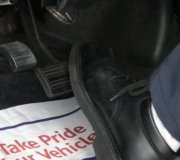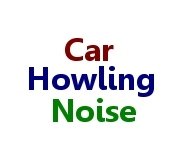First of all remove the belt, wash and scrub all of the pulleys, then install a new, clean belt. Serpentine belts must never have any type of lubricant or belt dressing applied. The squeal comes from the belt walking sideways across a pulley as it goes around it. That is always due to a pulley that is tipped or turned in relation to the belt. Oil can quiet that by making it easier for the belt to slip. Belt dressing can quiet it by making the belt stick and flex with the pulley, ... Until the belt gets plugged with road dirt and dust, then the noise will get worse. Even if you find and correct the cause of the squeal, there's no point in continuing if a contaminated belt is not replaced.
To verify it's a belt squeal and not a pulley bearing, you can use water dribbled lightly on the smooth back side of the belt while the engine is running, but nothing else. You can also buy a new belt from the dealer's parts department with the letter "Q" in the beginning of the part number. Remember "Q" for "quiet".
If water changes the noise, sight down the belt to see that it's in line where it goes around every pulley. Look for one where you can see the edge of the belt peeking out a little beyond where it goes around all the other pulleys. That is rarely going to be on a solid pulley such as the alternator or power steering pump. If those pulleys are not straight, you're going to have worn bearings in that unit and lots of noise too. The exception would be if one of them is not mounted properly. See my sad drawing below. I tried different ways to draw an explanation showing pulley misalignment, and this is the least difficult version to understand. 1/16" of misalignment is plenty to cause a squeal. The old V-belts could easily tolerate a lot more.
The main culprit is the spring-loaded tensioner pulley, which you replaced already, because wear can take place in its pivot. You also have to check for rust, scale, or other debris that got stuck behind its mounting surface. That will prevent it from sitting squarely on its mounting surface.
Once a belt squeals, it seems it will always squeal until it is replaced, but that has been my experience based typically on old belts that are already worn. When I've had a new belt squeal, I searched for the cause and fixed it right away. I suspect the continued squealing of older belts is due to the smooth back side getting burnished to a glossy finish that can't grab onto a pulley.
Don't overlook the crankshaft pulley. I don't know which engine you have, but if it has a stamped steel pulley bolted to the hub of the vibration damper, that will not be the problem. If the pulley is part of the cast iron outer ring, it is fairly common today on all car brands for it to break loose from the hub. The gel layer in between lets go from the stress of the belt tension on it. The auto parts stores have huge catalogs showing nothing but replacement vibration dampers for almost every car and engine size.
Image (Click to make bigger)
Sunday, February 19th, 2012 AT 9:03 PM



